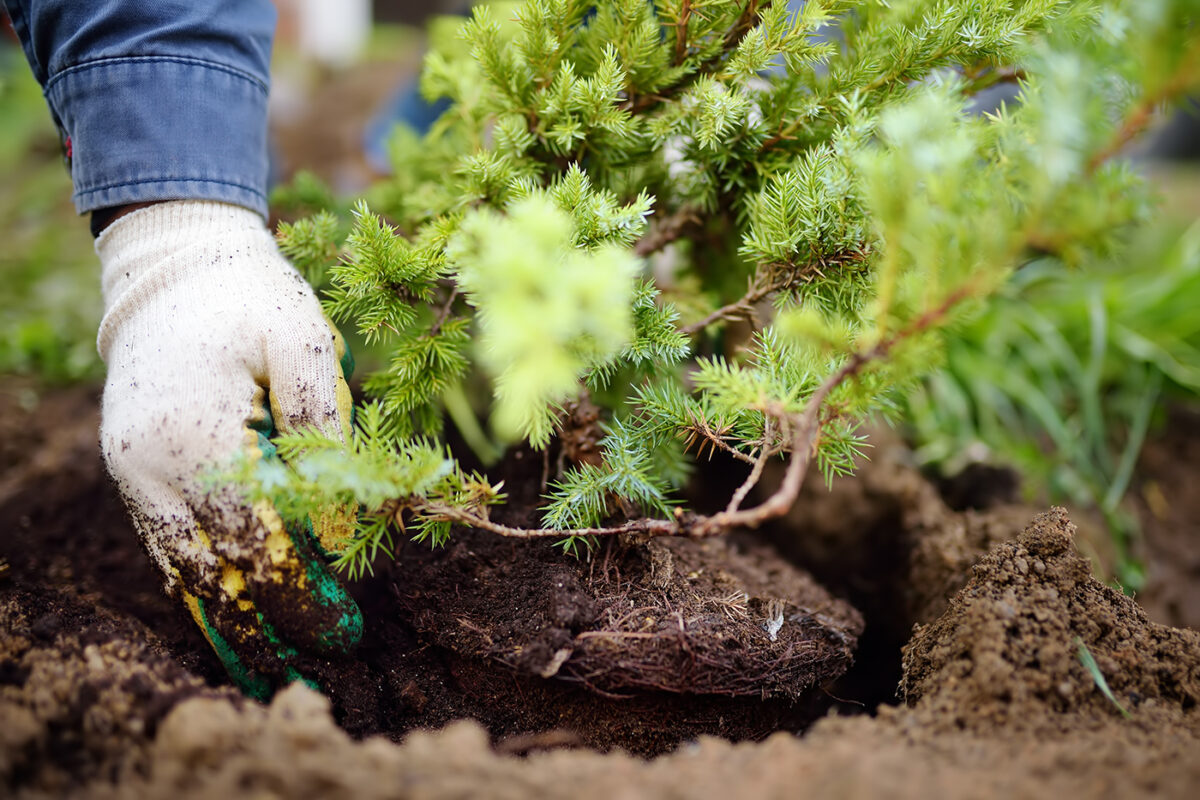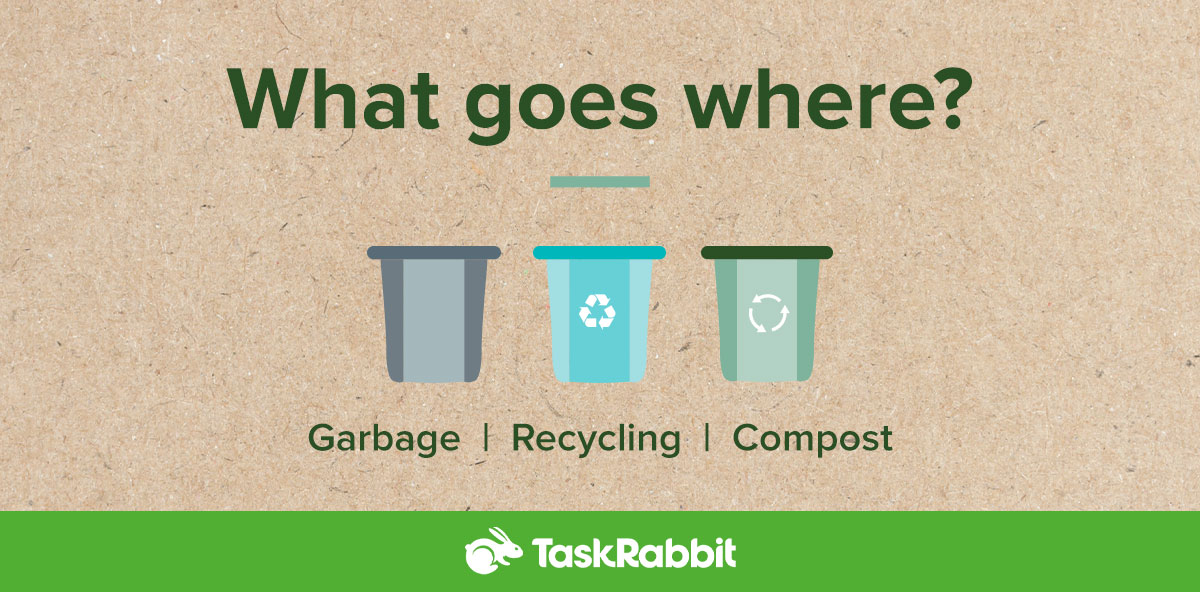Transplanting a tree can be a rewarding but delicate task. Doing it yourself is possible, but it takes care and know-how. Gardening is hard work, but it pays off when you know how to do it right.
Read on to learn all about how to transplant a tree and moving trees and shrubs.
Difficulty: Hard
Average Time: 3-4 Hours
Cost: $10 (DIY), $100+ for professional help
The difficulty of planting a tree is associated with the preservation of the tree itself, because transplanting a tree can send the plant into shock and potentially kill it. It’s a very delicate operation and often warrants hiring a helping hand. If you’re dealing with a very large tree, definitely hire some help. In some cases, some trees are too large to transplant safely.
Reasons for Transplanting Trees and Shrubs
People transplant trees or shrubs for aesthetic reasons, but most times, it’s because of unexpected changes: a new fence is obstructing the sun from shining on the plant, the plant’s roots have grown too close to pipes, or perhaps a shrub is beginning to encroach on a neighbor’s property. Sometimes, if you want to keep it, transplanting the tree is your only option.
Best Time to Transplant Trees
The timing of your tree transplanting project can significantly impact its success. In general it’s best to uproot a tree in the fall or early spring. This is because most trees are dormant during this time and less susceptible to being damaged.
You’ll also want to ensure the plant’s soil is moist when transplanting, so another good time to do the task is just after it has rained.
Tools and Materials
Before you embark on your tree transplanting journey, gather the following materials:
- Shovel or spade
- Root ball digging tool (if necessary)
- Tarp or burlap
- Pruning shears
- Water hose or buckets
- Soil mixture (compost, topsoil, and peat moss)
- Mulch
- Stakes and twine (for larger trees)
How to Transplant a Tree
When transplanting trees, follow these steps carefully:
1. Dial 881 (1-2 months prior to replanting)
Before you start, call 811 (if you’re in the US), which is the national number to call before beginning a digging project. You can also go to your state’s 811 center website to request assistance with determining where buried utilities are located. This step is essential for preventing serious accidents that can harm you or disrupt utility services in your area.
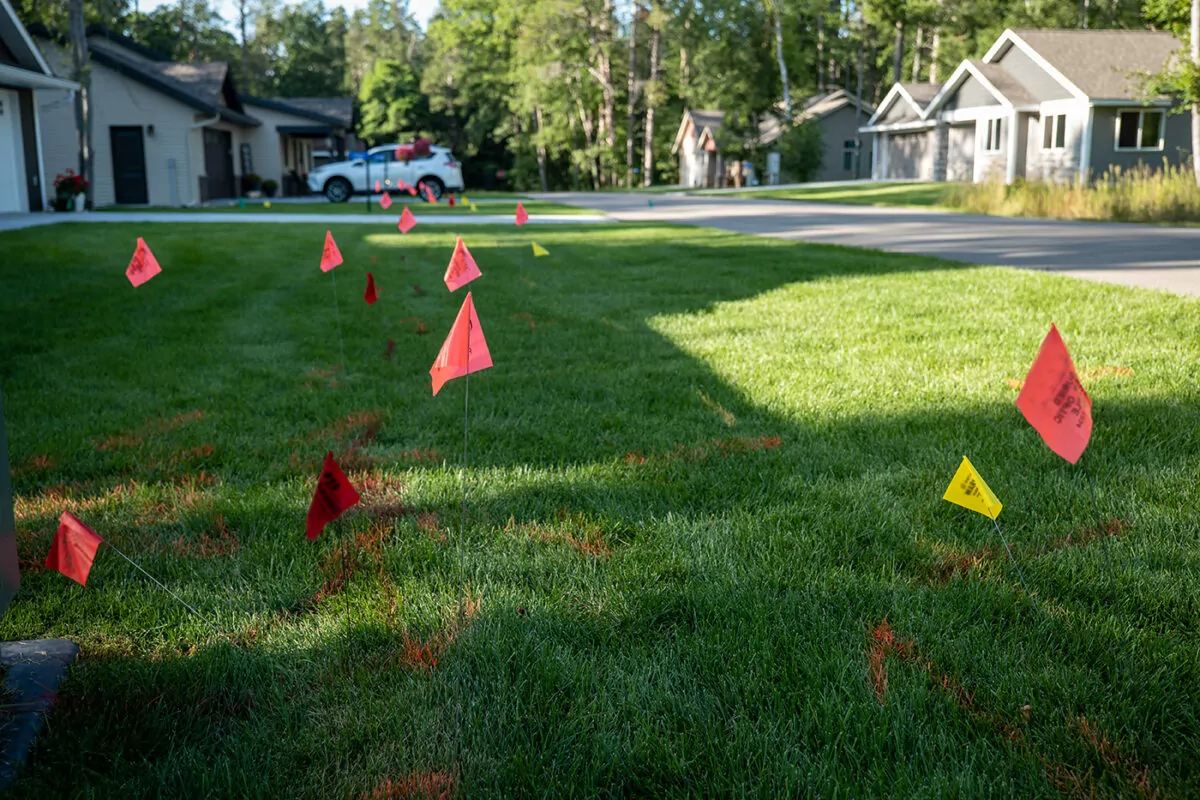
2. Trim The Roots (1-2 months prior to replanting)
The first step begins a few months before relocation as well. Prune the roots around your tree as you normally would. Typically you start by watering, then begin to trim the roots of your tree to an appropriate size. In general, this is fairly simple for smaller trees, because the tree’s roots should be a foot long per inch of thickness in its trunk (1 inch thick trunk, 1 foot diameter roots). For larger trees, it’s best to hire help rather than DIY, as larger trees usually have more fragile root systems.
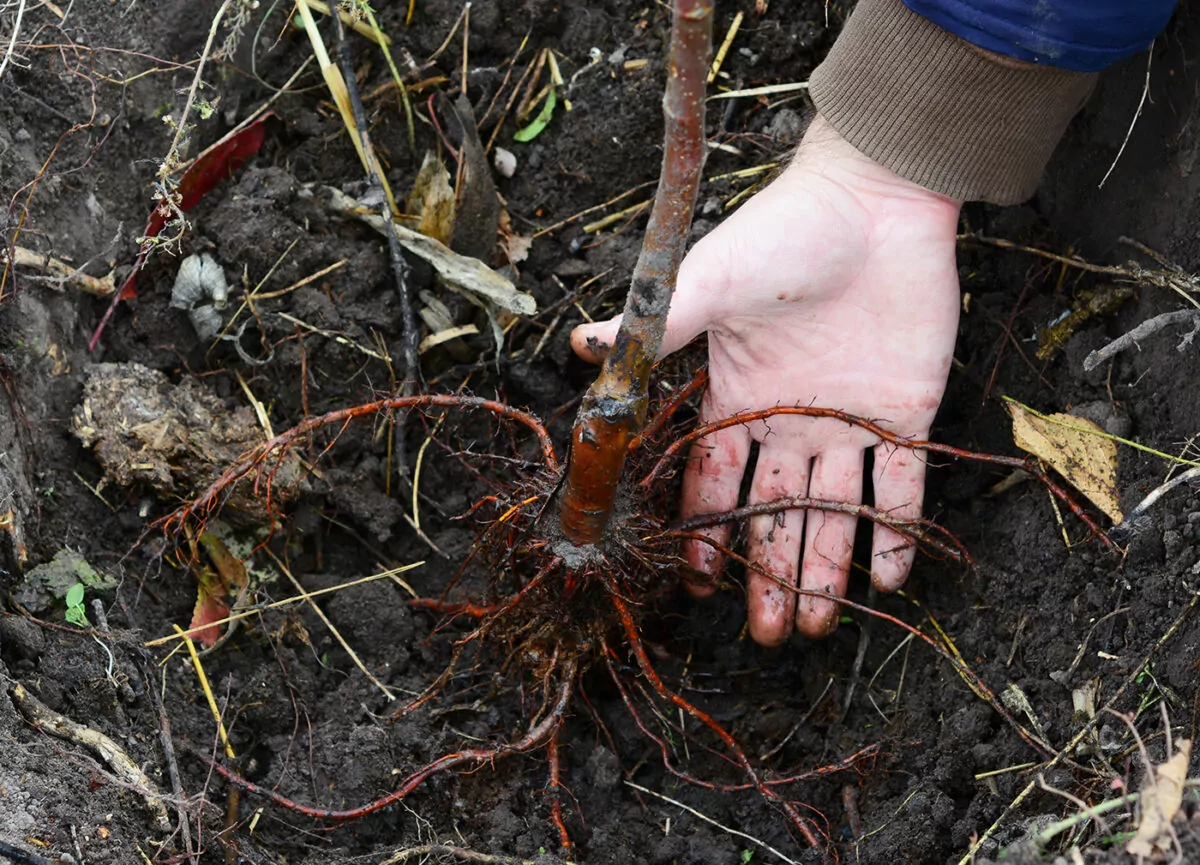
3. Dig Around The Root Ball
Dig a trench around your tree’s root ball, forming a circle around it. The depth of the trench is based on the age of your tree—for a larger tree, you’ll want your trench a bit deeper. Be sure to avoid utility lines when digging.
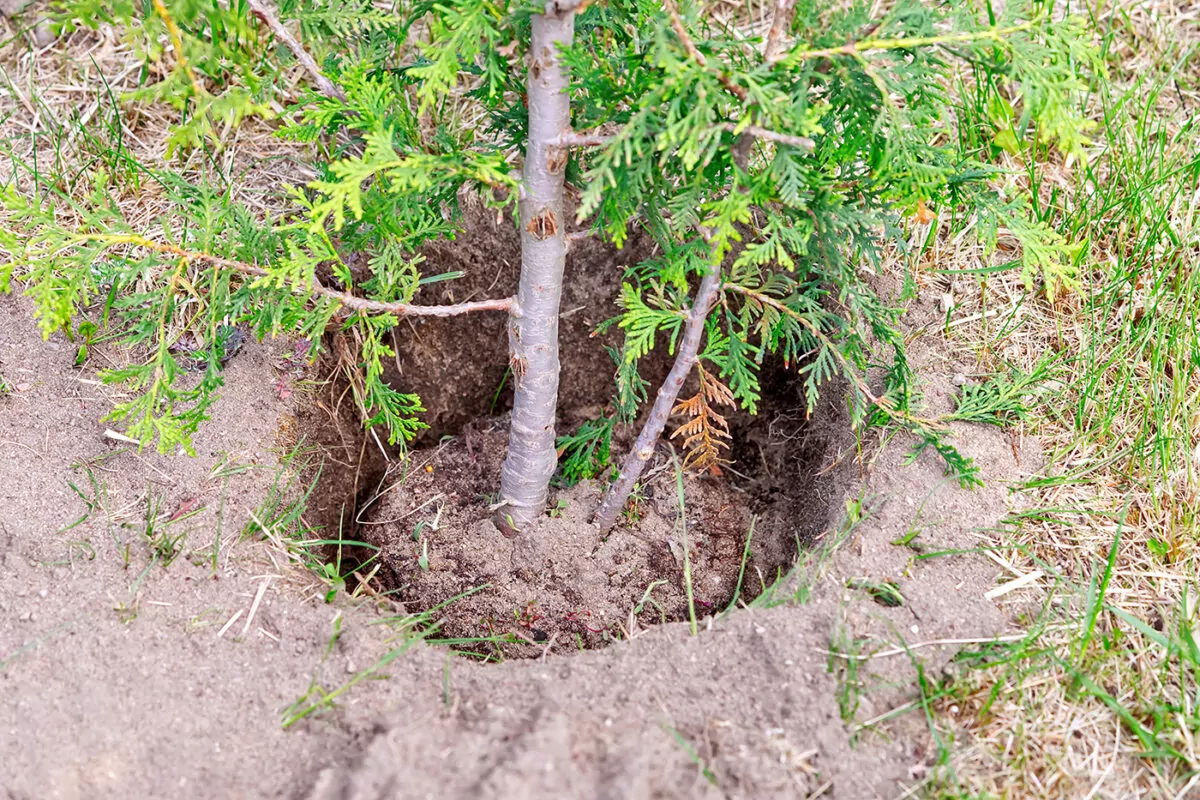
4. Move the Tree to a Tarp
Carefully lift the tree out of the hole, and place it on a tarp or burlap to transport it to the new location. Ensure the roots are intact. Tie it gently with twine if necessary. You can use the twine to stake the tree in place while you’re moving it as well.
5. Replace the Soil and Water
Replace the soil in the hole you’ve created, and water it to keep it moist. It’s important to try and restore the area where the tree was removed to its original state as best as possible. Once this is complete, the tree moving begins in earnest.
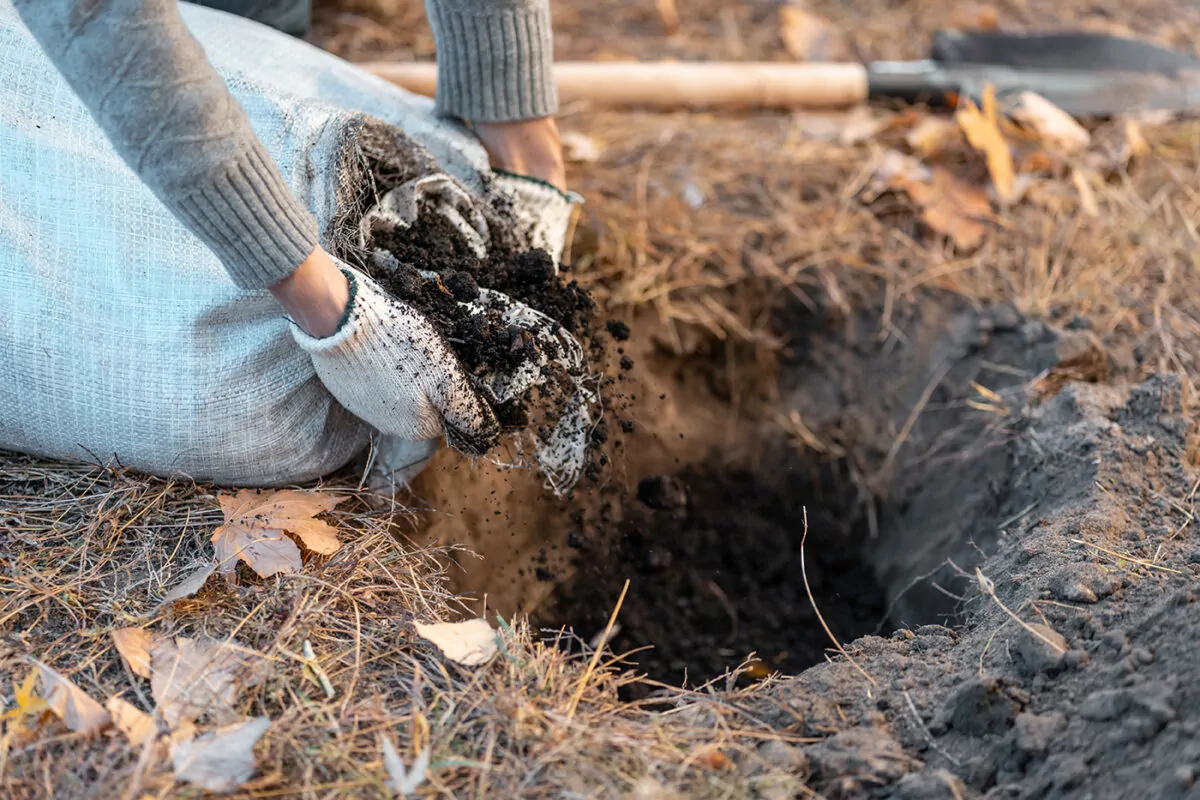
6. Dig A New Hole & Move the Tree to the New Location
Next, you’ll want to dig a new hole for your tree about the depth of its root ball. Don’t dig too deep or too shallow. Save the removed soil. Next, carefully take your tree and place it into the new spot. You’ll want to ensure its level at this point. Finally, water its roots and replace the soil.
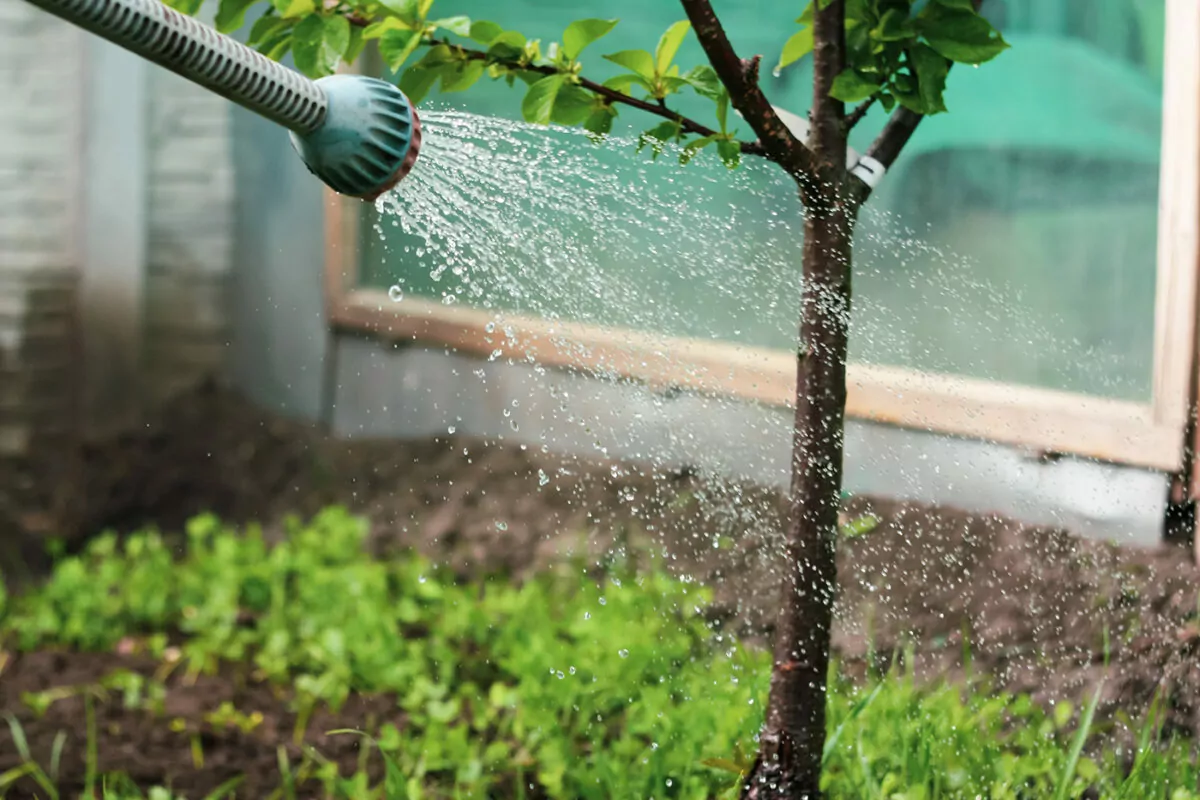
Transplanting Shrubs
Transplanting shrubs is essentially the same as moving trees—follow the process outlined above, and cover the soil around the transplanted plant with compost/mulch if possible.
Caring For A Plant After Transplanting
After a tree is transplanted, use the following tips to keep it in top shape:
- Add a layer of mulch or compost around its base to help it retain moisture. A layer should be 2-3 inches deep.
- Water your tree 1-2 times per week in 2-3 thirty-second intervals.
- Do not prune your tree after transplanting for at least a year (or longer for older trees).
- Do not fertilize your tree after transplanting. Trees need time for their roots to regenerate after replanting, and fertilizer impedes this process.
Voila! Your outdoor space is pruned, prim, and ready to be enjoyed.
Do I Need Help Transplanting Plants?
If you’re asking this question, it might be time to hire a Tasker. Taskers are experienced gardeners who can transplant all manner of trees and shrubs. So don’t bother getting your hands dirty this weekend; let a Tasker do it instead!
